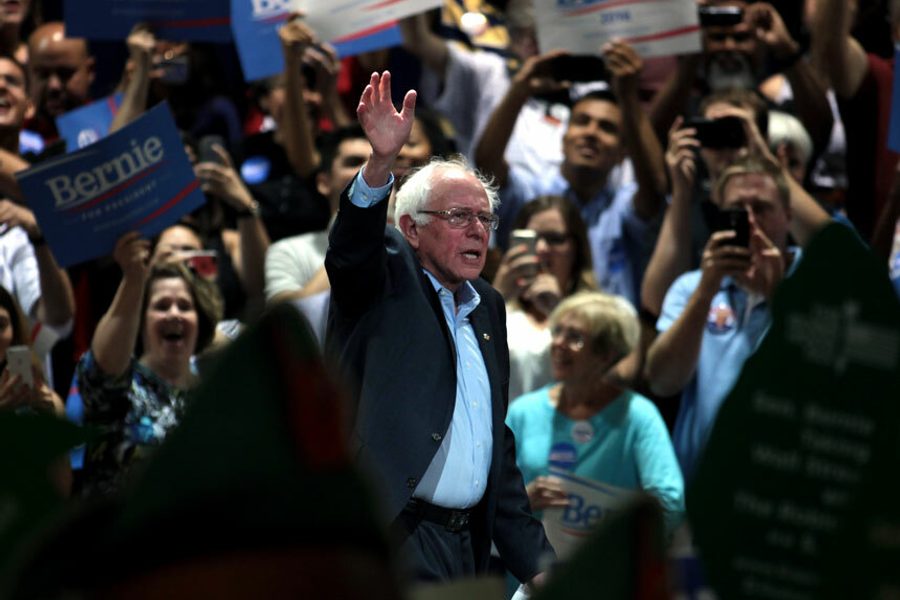Do-It-Yourself Governance
Without new social movements, there will be no new New Deal.
Elizabeth Sanders

When Barack Obama began to run for his party’s nomination two years ago, he could not have seen himself as the next Franklin Roosevelt, the founder of a new Democratic “regime” (to use Yale political science professor Stephen Skowronek’s term). More likely, Obama anticipated that, should he ultimately win the presidency, he would be what Skowronek labels a “pre-emptive” president, one who manages to be elected when his party does not dominate political philosophy or policy expectations, or have a sure place in the voters’ hearts.
Recall that despite George W. Bush’s dismal approval ratings, Obama and Sen. John McCain (R-Ariz.) were running neck and neck in the polls from mid-August through early September. Without the financial crisis, Obama may not have been assured electoral victory, much less a definitive Democratic sweep.
If Obama perceived his presidency as a Clintonian “pre-emption” – another round of triangulating that meant accepting the essential premises of the Reagan Revolution, assumed to still be strong despite the previous administration’s abject failures – that would explain the ambiguity of his campaign appeals to “hope” and “change,” minus a clear repudiation of Republicanism.
Obama seemed intent on reassuring the public that he was not a liberal Democrat, not a partisan of Rooseveltian regulation, taxation and big government. Even after his electoral victory, the reassurance game continued. The transition team and designated economic advisers represented a spectrum from former Clinton officials rightward.
His grassroots supporters grimaced as architects of financial deregulation – including the many proteges of former Treasury Secretary Robert Rubin (and Rubin himself), and the bete noire of President Carter’s defeat, former Federal Reserve Chairman Paul Volcker – were designated as Obama’s economic advisers. No economists like Joseph Stiglitz, Paul Krugman or Robert Reich grace the administration’s economic team. Furthermore, the administration chose a military officer and a Republican defense secretary to run its foreign policy, with Secretary of State Hilary Clinton hardly a dove herself.
The realm of realignment?
In 1933, Roosevelt’s break with the old regime seemed more sure and sharp. He did not bring the laissez-faire enthusiasts who created the Wall Street debacle onto a stage full of flags as a symbol of his commitment not to rock the boat. Roosevelt’s “Brain Trust” was made up of college professors, not Wall Street operatives. Roosevelt was not shy about using the tax code as a mechanism for redistribution of wealth.
Six weeks into his presidency, however, Obama appears to be warming to the Roosevelt role. A new regime “reconstructor” (in Skowronek’s theory of presidential challenge and limitation) enjoys an unusual window of opportunity. The old regime is discredited. Clearly its policies, philosophy and institutions have failed disastrously. The public is ready to try something new. The opposition sputters and can think of no alternatives beyond its old nostrums (as demonstrated by Louisiana Gov. Bobby Jindal’s GOP rebuttal to Obama’s speech on Feb. 24).
Obama’s speech was exhilarating in the manner of Roosevelt’s speeches. He exuded confidence in a new path, repudiation of the old, and specificity in the foci of the programs he would sponsor to get the country moving again.
“[T]hough we are living through difficult and uncertain times,” Obama said, “tonight I want every American to know this: We will rebuild, we will recover, and the United States of America will emerge stronger than before.”
Does this mean, then, that American politics is again in the realm of realignment, of the generational sea change associated with the elections of Jefferson, Jackson, Lincoln, Roosevelt and Reagan? There is a good possibility, but it rests on two conditions that are not at all certain to occur:
The first is a confident experimentation in the White House – in league with Congress – that leads, ultimately, to success. The second is the mobilization of social movements.
For the first to occur, it would mean that within two years (at least by the time of the midterm elections that have always signaled realignment), the economy would need to experience definite improvement.
New regimes bury their failed predecessors through the reconstruction of memory, the invention of a persuasive narrative that paints the old regime’s failures in the darkest hues, the new regime’s successes in the brightest contrasts. Conservatives have been relatively successful in painting the New Deal as a failure. As the story is told (and economics majors on campuses across the nation can recite it in unison), the New Deal did not bring the country out of the Depression; only World War II did that.
One of the first easy tasks of the Democratic Party should be to set the record straight. Whether one consults the figures in Milton Friedman and Anna Schwartz’s A Monetary History of the United States, or the graphs on Wikipedia’s New Deal entry, the undeniable facts are that after 1933, employment, manufacturing output, per capita income and gross domestic product all headed sharply up (except for the dip in 1937 when FDR, once re-elected, briefly abandoned his own stimulus program).
Economic historian Elliot Rosen, no more eager than Friedman to credit the New Deal’s recovery programs with emergence from the Depression, nevertheless provides a persuasive empirical disputation of the canard it was only World War II that buried the Depression. Rosen focuses instead on the creation of physical and human infrastructure that laid the foundation for post-war technological advances. While most accounts of the New Deal recovery efforts emphasize the short-term employment programs, it is well to remember the long-term contribution of education, family security and the infrastructure of roads, bridges, schools and electric lines to economic growth.
Just as important, the New Deal’s regulatory structure contributed to steady economic growth, before Reagan began in earnest to dismantle it through neoliberal appointments and lax enforcement. In his reconstruction effort, Obama will have the assistance of Congress, as did Roosevelt in his first two terms. In fact, it was Congress that compelled FDR to leave the gold standard, overcome the crippling currency deflation policies of the Federal Reserve Board, regulate banks and securities trading, invest in public power and rural electrification and create a new system of labor relations.
The most successful and lasting of New Deal economic experiments, usually portrayed as inside-the-White-House phenomena, were actually rooted in the demands and expertise of congressional progressives from both parties.
It takes a Congress
In his diary, New Deal Interior Secretary Harold Ickes tells the story of a mid-May, 1935, visit to the White House from a group of congressional movers and shakers, anxious about the waning energy and lack of direction in the White House.
At the time, banking reform, securities regulation and the Home Owners Loan Corporation were helping to stabilize the financial system, and public works job programs offered employment to millions.
But Roosevelt’s corporatist National Industrial Recovery Act (NIRA) experiment was sputtering, even before the Supreme Court struck it down in late May, and his other centerpiece, the Agricultural Adjustment Act (AAA) was helping mostly the largest farmers. Struggling middle-class Americans, their modest savings nearly exhausted, were tuning in their radios to flamboyant critics of the administration’s timidity, like Huey Long and Father Charles Coughlin. Roosevelt seemed out of ideas.
But Congress was not. It had a labor relations bill, an anti-monopoly bill, pacifist bills to control the munitions trade. And Congress was increasingly drawn to simple, direct solutions to the poverty of the elderly and World War I veterans – programs that would simply mail out government checks and replace the “trickle down” strategy of the NIRA and AAA with a bottom up anti-depression strategy. If the administration would not act, Congress would.
Congress unfurled its flag by passing (again) a Veterans’ Bonus bill, and it almost succeeded in overriding Roosevelt’s veto in the early summer of 1935. If the president would not act more aggressively, Congress would enact its own “shadow” New Deal program.
Finally, the president did act. In 1935, he called Congress back into session in the summer to pass the remarkable spate of legislation we know as the “second New Deal.” It brought forth a five-part Social Security Act, a National Labor Relations Act, a greatly expanded Works Progress Administration, a Holding Company Act that broke up utility monopolies, an act to control the export of weapons, a restructuring of the Federal Reserve System, and a bill to raise taxes on the rich. It was an amazing production, and it cinched Roosevelt’s re-election.
This, then, is the essential condition for pulling a president off the center-right, and toward the needs and demands of ordinary Americans: If the president flags, Congress must be active, and ready to come up with its own programs for recovery.
Calling all social movements
But to get Congress to act, something else is needed: dynamic social movements. It is clear that Congress in the 1930s was responding to at least six organized and energetic movements.
Maverick Sen. Huey Long’s (D-La.) Share Our Wealth program had the fantastic but wildly popular proposal that government simply give every American family a check in the mail annually – about $3,000 – so that all families could own a home, car, radio and other life essentials. Then there was the Townsend movement to give every person 65 or older a monthly check for $200, on the simple condition that they spend it all before the month was out.
In the same vein, the Veterans’ Bonus movement demanded that World War I veterans, a large group of whom had twice marched on and camped out in Washington, D.C., be paid their promised bonuses early. The American Federation of Labor and the much more active and inclusive unions that created the Committee for Industrial Organization demanded a national legal framework to facilitate unionization.
Radio priest Father Coughlin, though increasingly unstable, was a fierce critic of both the conservatism and the power-centralizing tendencies of the early New Deal, and his followers, centered among Midwestern Catholic workers and lower middle classes, might be loosely called a “movement.”
Finally, peace groups were extremely active in communicating information about the causes and prevention of war, and lobbying Congress to investigate war profiteering in the First World War and to pass measures for disarmament negotiations, control of the munitions trade and more drastic war prevention measures.
Below the national level, the movement led by Upton Sinclair to End Poverty in California (EPIC) championed its own solutions for the Depression that were far more radical than Roosevelt’s.
These movements pulled Congress and the president to the left. They deserve much credit for the New Deal’s successes in reversing the Depression spiral and creating lasting institutions for financial stability, economic growth and economic security.
If Obama’s conservative economic advisers are to formulate programs of benefit to Main Street rather than Wall Street, it will take movement activism to propel them in that direction, and to counter the inevitable attacks from the right – while at the same time educating the public with information, argument and a framework that resonates with widely shared American values.
Throughout our history, it has been social movements (defined as organized and sustained collective action by people outside formal centers of power to press their grievances on the state) that have made public officials accountable and broadly responsive.
Without the abolition movement, President Lincoln would have resisted freeing the slaves, and Congress might not have tried to secure their citizenship rights in the 13th, 14th and 15th Amendments.
In fact, the well-heeled fellows who drafted the Constitution at Philadelphia in 1787 would not have combined that limited text with the Bill of Rights that established essential democratic freedoms had it not been for that first national social movement, the Anti-Federalists.
President Woodrow Wilson would not have supported a women’s suffrage amendment had the movement not reached a threshold size that made its block of votes attractive for Wilson’s very close reelection contest in 1916.
And farmer and labor movements of that period pressed Congress and the president for an outpouring of legislation that came to be called the Progressive Era. Following the 1930s, social movements gave us landmark civil rights laws, women’s rights, environmental protection and, finally, an end to the Vietnam War.
Presidents come in all shapes and sizes, from the bumbling to the inspired to the tortured souls who do great harm. But the temptations to mask a minimally responsive program in grand rhetoric, to throw in their lot with the wealthy who fund their campaigns and control so many resources, or to abandon domestic policy struggles for the short term empowerment and rally effect of war making – these are institutional pathologies that will tempt even the most angelic of presidents.
Which is to say, if we want a new New Deal, we have to do it ourselves.






